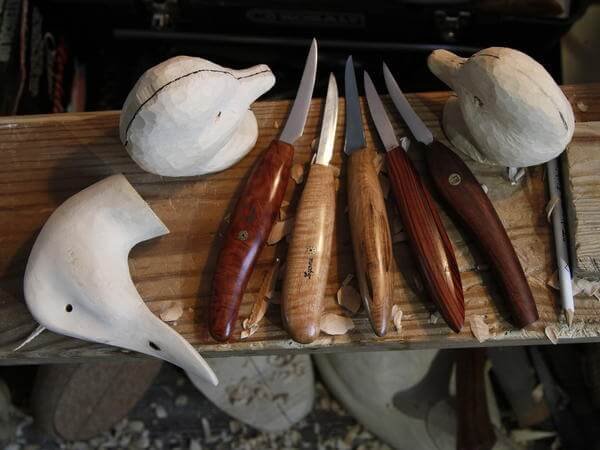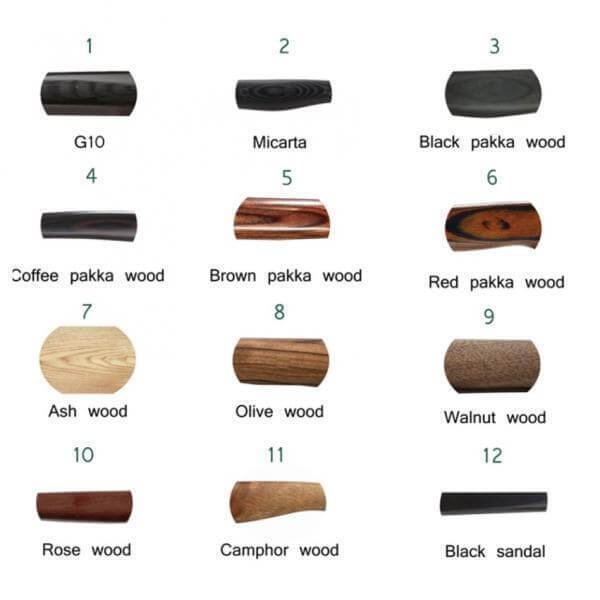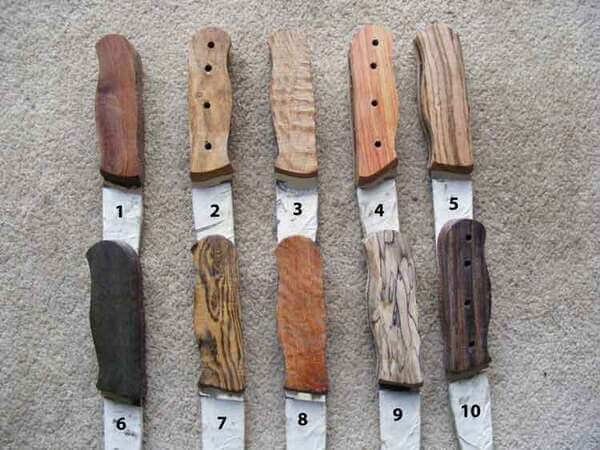When it comes to knives, the handle plays a crucial role in both aesthetics and functionality. While there are various handle materials available, knife enthusiasts and craftsmen often gravitate towards the timeless charm and natural appeal of wood handles.
In this article, we will explore the fascinating world of knife wood handles, discussing their types, grain patterns, stability, finishing, maintenance, comfort, and personalization options. Whether you're an avid collector, a culinary enthusiast, or simply appreciate the art of fine craftsmanship, understanding the nuances of knife wood handles will deepen your appreciation for these beautiful and functional creations.
Types of Wood for Knife Handles
One of the most captivating aspects of knife wood handles is the wide array of wood types available. Craftsmen and manufacturers carefully select wood species that possess the ideal combination of durability, density, and aesthetic appeal. Hardwoods such as walnut, oak, ebony, rosewood, and cocobolo are renowned for their robust nature and ability to withstand the rigors of everyday use. On the other hand, softwoods like pine, cedar, and spruce offer a softer and more lightweight option, perfect for decorative or occasional use knives. Each wood species boasts its own unique characteristics, grain patterns, and color variations, ensuring that there is a perfect choice to suit every taste and requirement.
Grain Patterns: Adding Visual Interest
The grain pattern of the wood is a defining feature of knife wood handles, contributing to their visual appeal. Straight grain patterns provide a classic and clean aesthetic, while burl patterns showcase intricate swirls and knots. For those seeking a touch of elegance, birdseye grain patterns offer a mesmerizing display of small, circular markings. Curly grain patterns feature wavy lines that create a sense of movement, adding a dynamic element to the handle. Additionally, spalted patterns, created by a natural fungal process, infuse the wood with striking lines and dark streaks. The variety of grain patterns available ensures that each knife handle possesses a unique character, making it a truly distinctive work of art.
Stability: Ensuring Longevity
Apart from its visual appeal, the stability of a wood species is a crucial consideration for knife handles. Wood that is prone to warping, shrinking, or expanding excessively with changes in temperature or humidity may compromise the handle's fit and integrity. Manufacturers and craftsmen carefully select woods that exhibit good dimensional stability to mitigate these issues. Furthermore, proper drying techniques and treatments are employed to enhance the stability of the wood. By utilizing stable wood species and employing appropriate crafting techniques, knife makers ensure that the handle remains robust and reliable, capable of enduring the test of time.
Finishing and Maintenance: Protecting Beauty
To enhance the appearance of wood handles and protect them from moisture, they undergo finishing processes. Oils, waxes, or varnishes are commonly applied to the handle's surface, adding a lustrous sheen and creating a protective barrier against environmental factors. Regular maintenance is essential to preserve the longevity of wood handles. Applying oil or wax periodically helps to prevent drying or cracking, ensuring that the handle retains its natural beauty and durability.
It's important to note that excessive exposure to moisture should be avoided, as prolonged soaking or dishwashing can damage the wood. Proper cleaning and drying techniques, as recommended by the manufacturer, will help maintain the handle's integrity and extend its lifespan.
Comfort and Grip: A Natural Connection
One of the key advantages of wood handles is their comfortable and natural grip. The tactile properties of wood provide a pleasing feel and ensure a secure hold during knife use. Knife makers often shape and contour the handles, considering ergonomic principles to enhance comfort and usability. The handle's design takes into account factors such as finger grooves, palm swells, and textured surfaces, promoting a firm grip and reducing fatigue during extended use. Whether you're preparing a gourmet meal or embarking on an outdoor adventure, the natural connection between your hand and a well-crafted wood handle elevates the overall experience.
Personalization: Unleashing Creativity
Wood handles offer ample opportunities for customization, allowing craftsmen and knife enthusiasts to express their creativity. Techniques such as carving, engraving, staining, or adding inlays can transform a wood handle into a unique masterpiece. Carvings can depict intricate patterns, symbols, or even personalized engravings, adding a touch of personal significance. Staining techniques enhance the natural color of the wood or introduce new hues, expanding the design possibilities. Inlays, which involve embedding contrasting materials such as metals or other woods, create eye-catching accents and further highlight the handle's individuality. By embracing these customization techniques, knife makers and enthusiasts can create knives that are not only functional tools but also works of art, reflecting their own unique style and personality.
Dangerous beauty with artistry
Knife wood handles embody a captivating blend of beauty and functionality. With their wide range of wood types, captivating grain patterns, stability, finishing options, and opportunities for personalization, these handles possess a timeless charm that continues to captivate knife enthusiasts and collectors alike. The natural feel, comfortable grip, and durability offered by wood handles elevate the overall knife experience, be it in the kitchen, the great outdoors, or a display case. So, the next time you hold a knife with a wood handle, take a moment to appreciate the artistry and craftsmanship that goes into creating this exquisite piece of functional art.





